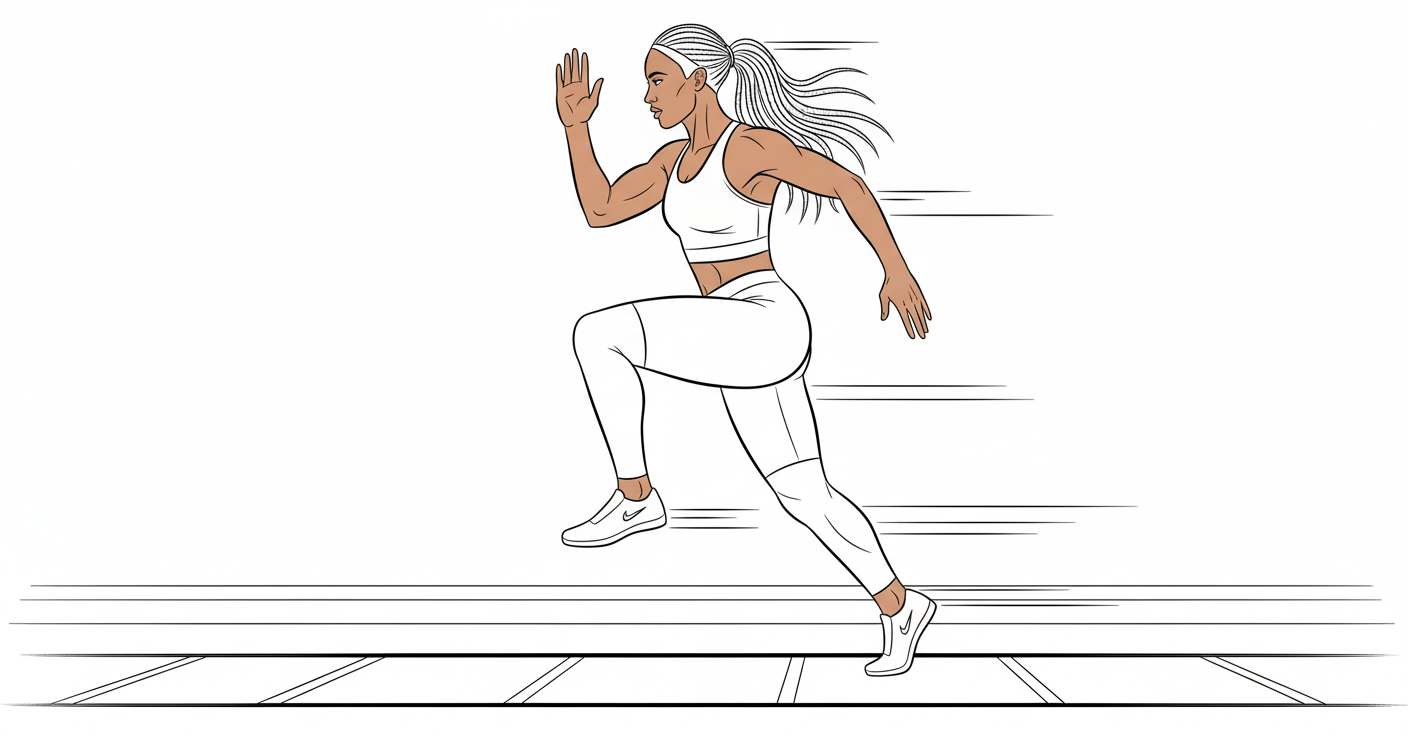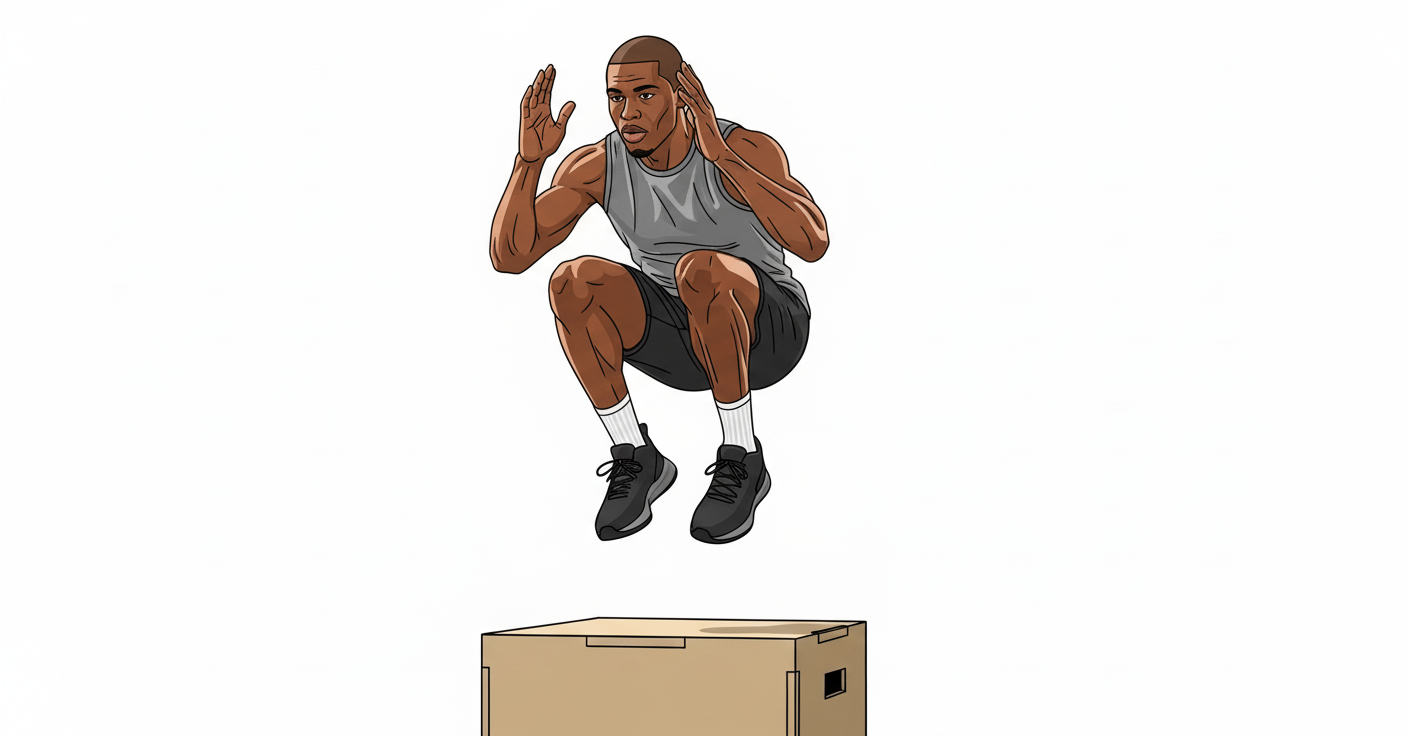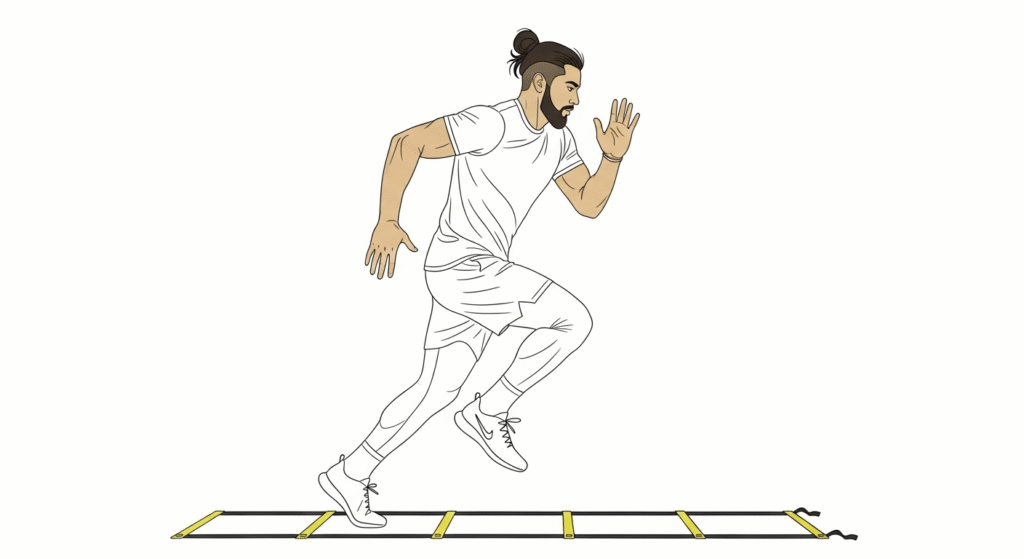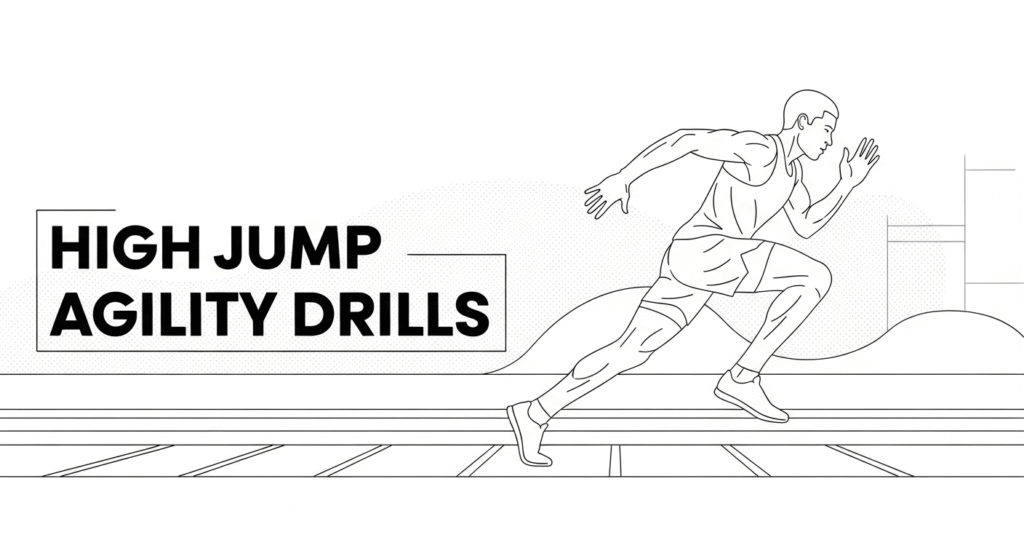High Jump Agility Drills: High jump is a dynamic and technical event that demands not only physical strength but also impeccable coordination and flexibility. To excel in high jump, athletes must integrate targeted agility drills into their training regimen. These drills not only improve the jumper’s ability to perform explosive movements but also enhance overall coordination and flexibility, reducing the risk of injuries. This article explores the most effective agility and flexibility exercises for high jumpers, providing a comprehensive guide to elevate performance and ensure longevity in the sport.
Whether you’re a beginner looking to improve your technique or an experienced athlete aiming to break your personal record, incorporating specific agility drills for high jump into your training routine can make a significant difference. High jump requires a unique combination of speed, power, and technical precision – elements that can all be enhanced through dedicated agility training. Let’s dive into the essential drills that can transform your approach, takeoff, and clearance phases, helping you soar to new heights.
High Jump Agility Drills: Dynamic Warm-Up Routines
Before any high jump training session, a proper warm-up is non-negotiable. Dynamic warm-ups specifically designed for high jumpers serve as more than just injury prevention – they actually prime your neuromuscular system for the complex movements ahead. Unlike static stretching, dynamic warm-ups involve continuous movement that raises your core temperature and increases blood flow to the muscles you’ll be engaging during your jump.
A comprehensive dynamic warm-up for high jumpers should last about 15-20 minutes and progress from general to specific movements. Begin with light jogging or skipping for 3-5 minutes to elevate your heart rate and core temperature. This initial phase prepares your cardiovascular system for the more intense work to come.
Leg swings form a crucial component of any high jumper’s warm-up routine. Standing next to a wall or support for balance, swing one leg forward and backward in a controlled manner, gradually increasing the range of motion. Perform 10-15 swings per leg, focusing on activating your hip flexors and hamstrings – muscles that play a vital role in the takeoff phase of your jump. Follow this with lateral leg swings, moving your leg from side to side to activate the hip abductors and adductors essential for stability during your approach.
Arm circles complement leg swings by preparing the upper body for the coordinated arm drive necessary during takeoff. Perform both forward and backward circles, starting with small motions and gradually increasing to larger ones. This movement not only warms up your shoulder joints but also activates the trapezius and deltoid muscles that help generate upward momentum during your jump.
As you progress into more specific movements, incorporate lateral shuffles by assuming an athletic stance with your knees slightly bent. Shuffle sideways for 10-15 meters, maintaining proper posture and keeping your center of gravity low. This exercise enhances your ability to maintain balance and control during the curved approach of a Fosbury Flop technique.
High knees serve as an excellent transition from general warm-up to more jump-specific movements. March in place initially, then progress to a more dynamic movement, driving your knees toward your chest while maintaining an upright posture. Focus on the height of your knees rather than speed, aiming for 20-30 seconds of continuous movement. This exercise activates your hip flexors and quadriceps while also beginning to prepare your body for the explosive movements required in high jump.
- Incorporate leg swings and arm circles to activate major muscle groups.
- Perform lateral shuffles and high knees to improve agility and coordination.

High Jump Agility Drills: Plyometric Exercises
Plyometric training is perhaps the most valuable component of agility drills for high jump success. These explosive exercises develop the fast-twitch muscle fibers crucial for generating maximum vertical force during takeoff. By training your muscles to contract more quickly and powerfully, you’ll see direct improvements in your jump height and efficiency.
Box jumps stand as a cornerstone plyometric exercise for high jumpers. Using a sturdy box or platform between 12-24 inches high (starting lower and progressing as your ability improves), stand with feet shoulder-width apart about a foot away from the box. Drop into a quarter squat and explode upward, landing softly on the box with both feet simultaneously. The key is to focus on maximum height rather than speed, with full extension of the hips, knees, and ankles at takeoff. Begin with 3 sets of 5-8 repetitions, resting 60-90 seconds between sets.
What makes box jumps particularly effective for high jumpers is their ability to simulate the explosive takeoff phase while developing coordination between the upper and lower body. As you jump, practice driving your arms upward just as you would during an actual high jump attempt. This synchronized movement trains your body to generate maximum upward force.
Bounding exercises represent another essential category of plyometrics that develop the elastic strength needed for effective high jumping. Single-leg bounds involve pushing off powerfully with one leg, driving the opposite knee up and forward, then landing on that leg and immediately repeating with the other leg. Perform these for 15-20 meters, focusing on height and distance with each bound. The exaggerated running motion trains your legs to generate force quickly while improving your takeoff mechanics.
Alternating leg bounds build upon this foundation by emphasizing the rhythm and timing crucial for a consistent approach. As you bound forward, focus on spending minimal time on the ground while maximizing air time – exactly what you need during your high jump takeoff. For advanced jumpers, uphill bounding adds resistance that further develops power and explosive strength.
Depth jumps offer perhaps the most sport-specific plyometric training for high jumpers when performed correctly. Step off a box 12-18 inches high, land softly with both feet simultaneously, then immediately explode upward into a maximum vertical jump. This exercise trains the stretch-shortening cycle critical for converting the horizontal momentum of your approach into vertical lift during takeoff. Limit depth jumps to 2-3 sets of 5-8 repetitions, as they place significant stress on your neuromuscular system.
- Box jumps to build leg power and explosive strength.
- Bounding exercises to enhance stride length and power.

-
High Jump Agility Drills: Ladder Drills for Agility
Agility ladder drills provide high jumpers with a powerful tool for developing the quick, precise footwork necessary for an effective approach. The approach phase in high jump requires controlled acceleration along a curved path, demanding exceptional foot coordination and rhythm – qualities that ladder drills specifically enhance.
An agility ladder laid flat on the ground creates a systematic framework for practicing various footwork patterns at increasing speeds. For high jumpers, focus on drills that develop both linear and lateral agility, as both movement patterns feature prominently in the high jump approach.
The in-and-out drill forms the foundation of ladder training for high jumpers. Starting at one end of the ladder, place both feet inside the first square, then move both feet outside the next square, continuing this alternating pattern through the entire ladder. Begin at a moderate pace, focusing on precise foot placement before gradually increasing your speed. This drill develops the quick foot adjustments often needed during the approach phase when slight corrections are necessary.
As you progress, try the single-foot in-and-out variation. Instead of moving both feet simultaneously, step with one foot into each square while the other foot steps outside. This pattern more closely mimics the rhythmic alternating footwork of your high jump approach. Perform 4-6 repetitions of each ladder drill, focusing on quality of movement rather than speed initially.
Side shuffle patterns prove particularly valuable for high jumpers who use the Fosbury Flop technique with its curved approach. Standing sideways to the ladder, quickly shuffle your feet in and out of each square while moving laterally down the ladder’s length. This develops the lateral agility needed to maintain speed and balance through the curved portion of your approach. Practice shuffling in both directions to ensure balanced development.
The icky shuffle introduces complexity that challenges your coordination and mental focus. Step into the first square with your left foot, followed by your right foot, then step outside to the left with your left foot. For the next square, lead with your right foot, followed by your left, then step outside to the right. This complex pattern forces your brain to coordinate precise foot placements – a skill directly transferable to adjusting your approach steps based on visual feedback during a jump.
For advanced high jumpers, try incorporating single-leg hops through the ladder. Hopping on one leg through alternate squares develops unilateral strength and stability critical for the takeoff phase when all your weight transfers to the jumping leg. This drill also identifies any strength imbalances between your legs that could affect your jumping performance.
- In-and-out drills to improve footwork precision.
- Side shuffle patterns to increase lateral movement agility.

High Jump Agility Drills: Conclusion
Integrating targeted agility and flexibility drills into high jump training is essential for athletes aiming to elevate their performance and minimize injury risks. By incorporating dynamic warm-ups, plyometric exercises, agility ladder drills, dedicated flexibility routines, and coordination-enhancing activities, high jumpers can develop the necessary physical attributes to excel in the event. Consistent application of these exercises not only boosts jumping ability but also fosters a resilient and adaptable athletic foundation, ensuring long-term success in the high jump discipline.
What makes these agility drills for high jump particularly effective is their sport-specific nature. Each exercise has been designed to address the unique demands of the high jump event, from the curved approach to the explosive takeoff and the technical bar clearance. Rather than generic athletic training, this targeted approach ensures that every minute of your training directly translates to improved performance on the high jump mat.
Remember that progression is key when implementing these drills. Begin with mastering the basic movements before advancing to more complex variations. Track your progress by recording jump heights, drill performances, and flexibility milestones. This data-driven approach allows you to identify which agility and flexibility drills yield the greatest performance improvements for your individual needs.
Finally, consistency trumps intensity when developing the neuromuscular patterns required for high jump success. Regular practice of these drills, even for shorter durations, will yield better results than occasional high-intensity sessions. By committing to this comprehensive approach to agility and flexibility training, you’ll not only clear higher bars but also develop the athletic foundation that supports a long and successful jumping career.

